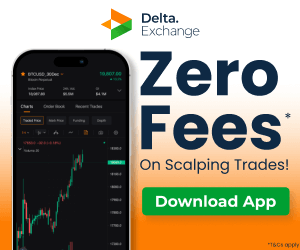As blockchain technology matures, developer-friendly ecosystems are becoming crucial innovation hubs. Investing in platforms that attract and retain technical talent offers early access to groundbreaking applications and protocols. The ecosystems with the strongest developer communities will likely dominate the next wave of blockchain adoption, creating significant value and reshaping entire industries.
1. Cosmos (ATOM)
Cosmos is designed for interoperability, enabling seamless communication between blockchains. It provides developers with a modular framework to build independent blockchains that can interact through its Inter-Blockchain Communication (IBC) protocol. With its scalable and customisable architecture, Cosmos supports a broad range of decentralised applications (dApps).
Key features include the Cosmos SDK for easy blockchain development, Tendermint consensus for security, and staking rewards for network validators. ATOM holders can stake tokens to earn rewards while securing the network, making Cosmos an attractive option for developers seeking flexibility and cross-chain functionality.
2. Cardano (ADA)
Cardano is a research-driven blockchain that emphasises security and scalability. Using a layered architecture, it separates smart contracts from transactions, optimising performance. Developers benefit from Plutus and Marlowe, which allow for secure smart contract development, making Cardano a strong option for enterprises and long-term blockchain solutions.
Key features include the Ouroboros proof-of-stake (PoS) consensus for energy efficiency and formal verification for added security. Staking ADA allows users to earn passive income while supporting network decentralisation, making it a sustainable and secure choice for blockchain developers.
3. Avalanche (AVAX)
Avalanche is built for high-speed transactions and scalability, processing up to 4,500 transactions per second (TPS). It offers developers the ability to create custom blockchains, known as subnets, with tailored consensus mechanisms, making it a powerful alternative to Ethereum.
Its key features include an Ethereum-compatible C-Chain, low-latency finality, and staking rewards for validators securing the network. AVAX holders can stake tokens to earn rewards, while subnets provide developers with flexibility to build dApps, DeFi solutions, and enterprise blockchain services.
4. Aptos (APT)
Aptos, created by former Meta engineers, is designed for high scalability and security. It utilises the Move programming language, which enhances safety and smart contract execution. Aptos prioritises user experience with a focus on fast and efficient blockchain transactions.
Notable features include parallel transaction execution, low latency, and staking options. Developers can stake APT tokens to participate in network validation and earn rewards, ensuring stability while contributing to the ecosystem’s growth.
5. Polygon (MATIC)
Polygon enhances Ethereum’s scalability by providing Layer 2 solutions with faster and cheaper transactions. It offers multiple scaling solutions, including zk-rollups and sidechains, making it a preferred choice for developers building on Ethereum.
Polygon’s key features include EVM compatibility, robust developer tools, and stake opportunities. MATIC holders can stake their tokens to help secure the network while earning rewards. With its low fees and seamless Ethereum integration, Polygon is ideal for NFT marketplaces, DeFi, and gaming applications.
6. Near Protocol (NEAR)
Near Protocol simplifies blockchain development with its user-friendly design and sharding technology. It offers human-readable account names and supports Rust and AssemblyScript, making it accessible for both new and experienced developers.
Its key features include Nightshade sharding for scalability, a developer-friendly interface, and staking incentives. NEAR token holders can stake to earn rewards and contribute to network security, while developers can efficiently build community-driven dApps and social platforms.
In conclusion, each ecosystem offers unique strengths, and your choice depends on your project’s goals and expertise. Which blockchain are you most interested in exploring?
Written By Fazal Ul Vahab C H



